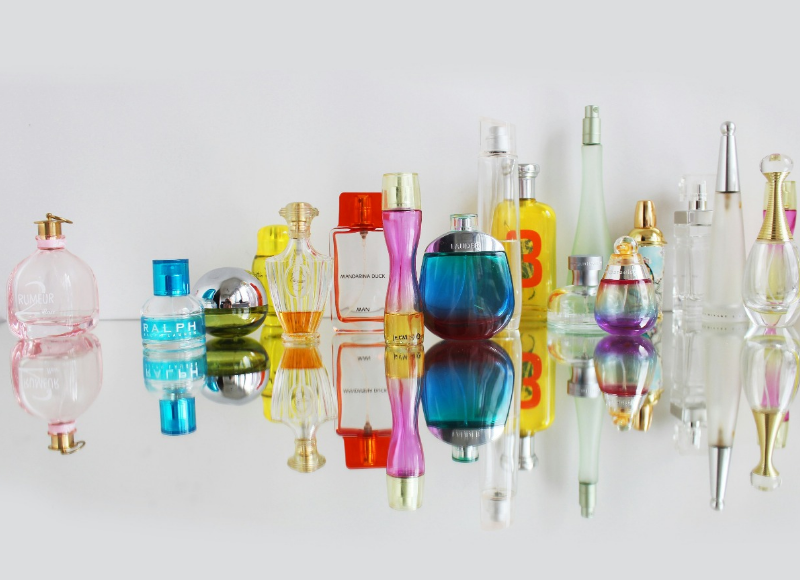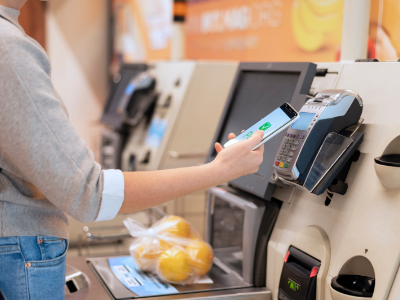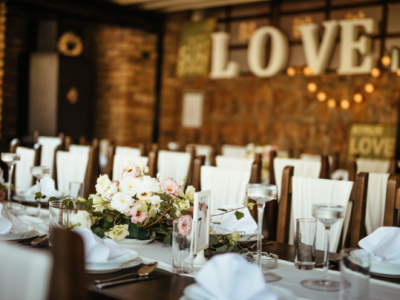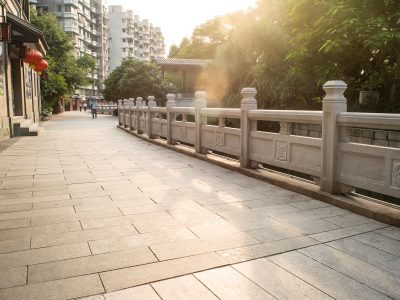Introduction
In India, consumers are no longer just buying perfumes; they are investing in experiences, emotions, and exclusivity. Gone are the days when fragrance was merely an after-thought. The Indian luxury perfume market, valued at INR 953 crore in 2023 and projected to nearly double by 2029, is undergoing a transformation. Buyers are no longer content with generic scents; they crave depth, exclusivity, and a sensory journey unlike any other.
From a risk management perspective, this evolution presents both opportunity and vulnerability. The risk landscape for fragrance houses, retailers, and supply-chain partners is more complex today: emerging consumer tastes, regulatory flux, supply-chain fragility, environmental pressures, and reputational risks combine to create a demanding environment. The question is: can India’s perfume makers identify the risks and manage them well enough to sustain growth, or will these pressures stifle their potential?
Decoding the Global Fragrance Landscape
The global luxury perfume industry is being redefined by a quest for personalization and exclusivity. Consumers are craving custom blends, limited editions, and fragrances that tell their unique stories, moving away from mass-market trends. The modern buyer seeks a scent that speaks to their individual identity, not one dictated by traditional marketing. A key disruptive force is the unisex segment, blurring conventional gender lines in fragrance classification.
The true innovation lies in the adoption of technology for curation. AI-driven personalization, exemplified by tools like “Fragrance Finder,” is revolutionizing the selection process through data-driven recommendations. Luxury buyers now expect technology to curate a scent tailored specifically to their nuanced preferences. This digital shift presents a fascinating challenge: How do brands forge a connection with a fragrance that a customer cannot physically smell? Brands that successfully pioneer AI-driven recommendations, virtual fragrance trials, and deeply immersive digital storytelling will capture this burgeoning market. However, reliance on these emerging technologies simultaneously introduces novel risks that must be proactively governed.
Identifying Critical Risks to India’s Fragrance Industry
1.Market Risk – The luxury perfume sector is inherently susceptible to market risk, driven by macroeconomic cycles, shifts in discretionary spending, and intense competition. This is compounded by the unpredictable nature of consumer preferences. Demand is highly volatile, influenced rapidly by social media trends, or celebrity endorsements. Losing the pulse of the market can quickly lead to obsolescence and severe inventory impairment.
2.Regulatory Risk – The perfume industry is subject to various regulations and standards aimed at ensuring safety, quality and transparency of products. Organisations such as the International Fragrance Association (IFRA) set ingredient limits; the European Union (EU) imposes restrictions on allergens and animal-testing; the U.S. Food and Drug Administration (FDA) demands labeling and registration for cosmetic products. These regulations vary regionally and evolve over time, creating compliance risk for perfume manufacturers and marketers. For Indian players aiming to import, manufacture or distribute luxury perfumes, the risk is two-fold: first, non-compliance can lead to bans, fines or reputational damage; second, reformulation to comply can impose cost and time burdens.
3.Environmental Risk – The reliance on natural resources such as rare plants, exotic flowers, and sometimes historically derived animal products introduces environmental risks. Factors such as climate change, overharvesting, and deforestation are leading to resource scarcity, volatility in raw material pricing, and supply chain fragility. Furthermore, the entire value chain—from sourcing and production (greenhouse gas emissions, water consumption) to complex packaging and disposal—generates measurable environmental impacts. These impacts directly affect a company’s operations and expose it to regulatory pressures and activist campaigns, thereby translating environmental concerns into profound reputational and financial risks.
4.Supply chain risk – The procurement of raw materials and delivery of finished products depend on an intricate, global network. A supply chain disruption—be it from natural disasters, geopolitical instability, trade wars, or logistics bottlenecks—can cause delays, critical shortages, and quality degradation. The 2011 Japanese earthquake, for example, impacted the supply of essential aromatics like jasmine, forcing some brands to reformulate products or absorb higher costs. The complexity of sourcing, often involving numerous intermediaries for both natural and synthetic components, elevates the inherent operational risk. In India, import duties and customs delays can further amplify the risk.
5.Ethical risk – A luxury perfume brand’s identity often touches on craftsmanship and exotic sources. Issues such as animal testing, animal-derived ingredients, cultural appropriation of indigenous scent traditions, or questionable labor practices present ethical risk. Some brands have been criticised for leveraging exotic cultures without fair compensation. Indian luxury consumers increasingly care about ethical credentials and failure to align may raise reputational risk.
6.Strategic risk – The luxury perfume segment is exposed to shifting consumer tastes, lifestyle trends, influence of influencers/celebrities, and more recently the unisex fragrance wave. Brands must constantly innovate to maintain relevance, yet the investment required for new product development, coupled with uncertain consumer reception, presents a significant strategic risk. Volatility of demand means that brands may mis-invest in scent profiles, packaging, or channel strategy, and lose relevance rapidly.
7.Product Risk – At the manufacturing level, a critical product risk lies in the misapplication of formulations. This includes inappropriately high exposures to forbidden stronger allergens or adding concentrations that exceed the permitted maximum in the finished product. Such errors, often stemming from poor quality control, pose a direct threat of detrimental health effects for consumers, which instantly triggers legal and reputational risk.
8.Reputational Risk – With the soaring demand for luxury goods comes a corresponding surge in counterfeit perfumes flooding online and grey marketplaces. These high-quality fakes directly undermine intellectual property, erode pricing integrity, and threaten brand reputation and consumer trust. When a consumer buys a substandard, fake product believing it to be authentic, the damage to the luxury brand’s intangible value is immediate and difficult to reverse.
How Can the Perfume Industry Overcome Regulatory, Environmental and Ethical Issues Using Risk Management Techniques?
Risk management in the fragrance industry will operate as a structured process involving the systematic detection of potential threats, quantifying their prospective impact and incidence, formulating and applying appropriate countermeasures, and continuously evaluating the efficacy of those interventions. To effectively govern the risk landscape, perfume makers require the robust structure of a modern Enterprise Risk Management (ERM) framework.
1. Risk Identification
Risk identification involves systematically listing all sources of potential risk, capturing their internal and external origins, and categorising them. Comprehensive risk identification involves the use of the following tools to anticipate potential threats:
- SWOT Analysis: A SWOT (strengths, weaknesses, opportunities, threats) analysis moves beyond the generic to help identify internal weaknesses (e.g., outdated sourcing practices, reliance on single suppliers) and external threats (e.g., a specific competitor launching an AI-driven personalization platform, a sudden legislative ban on a key ingredient).
- PESTLE Analysis: This tool is crucial for scanning the macro-environment (political, economic, social, technological, legal, environmental):
- Political/Legal: Assessing the stability of key sourcing nations (e.g., for Grasse flowers, sandalwood) and anticipating the probability of new tariffs or regulatory shifts (e.g., stricter EU/IFRA guidelines).
- Environmental: Evaluating the long-term impact of climate change on specific botanical yields and the risk of activist campaigns targeting non-sustainable packaging.
- Sociological/Technological: Tracking shifting consumer sentiment (e.g., the move to ‘clean’ beauty, the demand for personalized e-commerce experiences).
2. Risk Assessment
Once risks are identified, the next step is risk assessment, determining the magnitude of potential harm:
- Risk Matrix: This visual tool helps classify risks based on their likelihood (probability of occurrence) and impact (financial, reputational, legal severity). For a luxury brand, counterfeiting may be assigned a High Likelihood but an Extreme Impact (due to brand erosion), placing it in a quadrant demanding immediate executive attention.
- Risk Register: A live, dynamic document that records the granular details of each risk, including its source (e.g., Supply Chain Disruption), category (Operational/Financial), owner (e.g., Chief Sourcing Officer), status, and mitigation plan. This ensures continuous accountability and monitoring.
- Risk Appetite: Defining the organization’s risk appetite—the amount and type of risk a perfume business is willing to take—is paramount. For a legacy luxury brand, the risk appetite for reputational harm or product quality failure will be extremely low (near zero), guiding stringent quality control investment. Conversely, the appetite for innovation risk (investing in a new, unproven synthetic ingredient or personalization technology) might be moderate to high, driving resource allocation toward R&D.
3. Risk Mitigation
Mitigation means deploying strategies to reduce either likelihood or impact (or both) of key risks. In the fragrance industry, forward-looking mitigation includes:
- To counter the inherent supply chain disruption risk, a strategic commitment to Geographic and Ingredient Diversification is essential. Relying on a single source, no matter how prestigious (e.g., a single region for specific essential oils), creates a single-point-of-failure. Brands must invest in establishing reliable dual-sourcing operations across distinct regions. The industry could increase its investment in synthetic biology to cultivate high-quality, sustainable, and reliable lab-grown alternatives for highly volatile natural ingredients like oud or sandalwood. This move hedges against both resource scarcity driven by environmental risk, and geopolitical instability.
- The critical risks posed by regulatory divergence and product integrity failures can be addressed by integrating cutting-edge technology. Blockchain and Digital Fingerprinting technology creates a transparent ledger that guarantees the source and batch-specific data of every ingredient, from the farm to the lab. By leveraging this system, brands can instantly verify adherence to IFRA Standards and global regulations, minimizing the risk of accidentally incorporating forbidden or over-limit allergens.
- Brands can introduce ethically sourced ingredients, renewable alternatives, and refillable packaging to reduce environmental risk. This ESG commitment not only reduces environmental impact but builds profound brand equity, attracting the increasingly conscious high-net-worth consumer.
- The application of AI-driven quality control within the manufacturing process, where computer vision and sensor technology monitor precise concentrations during compounding, could prevent human error that could lead to detrimental health effects and subsequent catastrophic legal and reputational fallout.
- For Indian perfume brands aspiring to compete internationally, continuous monitoring of IFRA standards and regional laws is essential to avoid costly reformulations, product recalls, or export restrictions. Companies must allocate dedicated R&D budgets to reformulate products whenever ingredient guidelines evolve and ensure accurate labeling to uphold consumer transparency. Equally important is investing in compliance training for product-development and quality teams so that regulatory changes are not just documented but also embedded into day-to-day operations.
- Luxury fragrance houses can deploy authentication measures such as holographic seals and QR-coded packaging to help customers verify authenticity in real time. Legal enforcement through trademark protection and periodic audits of channel partners further strengthen these defenses. Beyond the technical measures, clear consumer communication—educating buyers on how to identify genuine products—plays a vital role in maintaining brand integrity.
- An agile channel strategy, inventory-control framework, and a sound financial risk management plan are indispensable in managing market risks and financial risks respectively. Using predictive analytics and demand-forecasting tools, brands can better align production volumes with real-time consumer interest, thus avoiding the twin pitfalls of overstocking—leading to forced discounts—or under-stocking, which results in lost sales and dissatisfied customers. Dynamic pricing models allow companies to respond to fluctuating demand while maintaining profitability. Integrating online and offline channels—for instance, enabling “buy online, pick up in store” options or offering exclusive digital editions—creates operational flexibility and widens consumer reach.
4. Risk Monitoring
Risk monitoring ensures the ERM framework remains dynamic and effective. This involves continuously tracking key risk indicators (KRIs) such as ingredient price volatility, the frequency of regulatory updates, customer complaint rates related to product integrity, and the velocity of counterfeit reports detected online. Audits must regularly test the efficacy of controls. The feedback loop ensures that as new technologies emerge or regulations change, the risk register and mitigation strategies are immediately updated, transforming risk management from a static function into a continuous strategic process.
How will the adoption of risk management help perfume companies enhance their performance and reputation?
Risk management in the fragrance industry delivers tangible benefits beyond just damage control. It enhances value in multiple areas –
- Profitability: ERM helps companies optimize costs and revenues. By using predictive analytics, companies can forecast demand with greater precision, adjusting production to avoid expensive overstocking or revenue-losing understocking. Quality control measures prevent costly product recalls, lawsuits, and regulatory fines that erode the bottom line.
- Customer Satisfaction: Risk management aids the delivery of consistent, reliable, and innovative products. Regular market research and customer feedback loops, driven by the risk assessment of consumer preferences, allow brands to design fragrances that truly resonate. Brands that adopt transparent and ethical practices will manage to build deep trust and loyalty among consumers, setting themselves apart from competitors and solidifying their position within the luxury segment.
- Brand Reputation: By proactively monitoring and managing online reputation, perfume makers can respond instantly and effectively to complaints or rumors, minimizing negative publicity. Demonstrating commitment to ESG initiatives shows a dedication to social responsibility, attracting consumers who share these values and enhancing the brand’s intangible value. Incorporating measures to prevent counterfeiting, protects brand integrity—the ultimate asset of any consumer-facing company.
- Strategic agility: Fragrance companies with a risk-intelligent culture are better positioned to adapt to shifting trends (unisex, niche, online-first) or respond to shocks (ingredient shortages, regulation change, supply–chain disruption).
Conclusion
The Indian luxury perfume market is poised to grow significantly, with reports projecting a growth from an estimated ₹10,637 Crore in 2024 to approximately ₹15,955 Crore by 2033. This growth is fueled by an expanding consumer base that has moved beyond metro cities into Tier-2 and Tier-3 markets, alongside the rapid growth of online sales channels and the rise of brand aspirational buying. However, this burgeoning opportunity is juxtaposed against a landscape of increasing risks, including evolving regulatory pressure, mounting environmental concerns, the widespread availability of counterfeit products, and continually shifting consumer preferences. For India’s perfume manufacturers, the unique opportunity lies in aligning their products with authentic Indian heritage notes, crafting compelling authentic stories, and leveraging local raw-material access. Ultimately, brands that successfully embed risk intelligence into their operations and prioritise risk governance in the luxury sector will be the definitive market leaders.
FAQs
1.What are the main risks in the luxury perfume industry?
The main risks in the luxury perfume industry are as follows –
- Market Risk – macroeconomic cycles, discretionary spending, competition.
- Regulatory Risk – Non-compliance can lead to bans, fines.
- Environmental Risk – The entire value chain generates environmental impacts.
- Supply chain risk – complexity of sourcing, import duties and customs
- Ethical risk – animal testing, animal-derived ingredients, cultural appropriation of indigenous traditions
- Strategic risk – new product development, uncertain consumer reception
- Product Risk – high exposures to forbidden stronger allergens
- Reputational Risk – High-quality fakes
2.What is the best way to reduce counterfeit risk?
With the soaring demand for luxury goods comes a corresponding surge in counterfeit perfumes flooding online and grey marketplaces.
These high-quality fakes directly undermine intellectual property, erode pricing integrity, and threaten brand reputation and consumer trust.
When a consumer buys a substandard, fake product believing it to be authentic, the damage to the luxury brand’s intangible value is immediate and difficult to reverse.
Deploying authentication measures such as holographic seals and QR-coded packaging to help customers verify authenticity in real time and legal enforcement through trademark protection and periodic audits of channel partners are some of the best ways to reduce counterfeit risk.
Beyond the technical measures, clear consumer communication—educating buyers on how to identify genuine products—plays a vital role in maintaining brand integrity.
3.How does ERM help luxury perfume brands?
A modern Enterprise Risk Management (ERM) framework covers
- Risk identification – listing all sources of potential risk
- Risk Assessment – determining the magnitude of potential harm
- Risk Mitigation – deploying strategies to reduce the likelihood and impact of risks
- Risk Monitoring – involves tracking key risk indicators to ensure mitigation strategies are updated
An ERM framework enhances value for luxury perfume brands in multiple areas –
- Profitability: ERM helps companies optimize costs and revenues.
- Customer Satisfaction: ERM aids the delivery of consistent, reliable, and innovative products.
- Brand Reputation: ERM promotes managing online reputation and incorporating measures to prevent counterfeiting.
- Strategic agility: Companies with risk-intelligent cultures are better positioned to respond to shocks.















